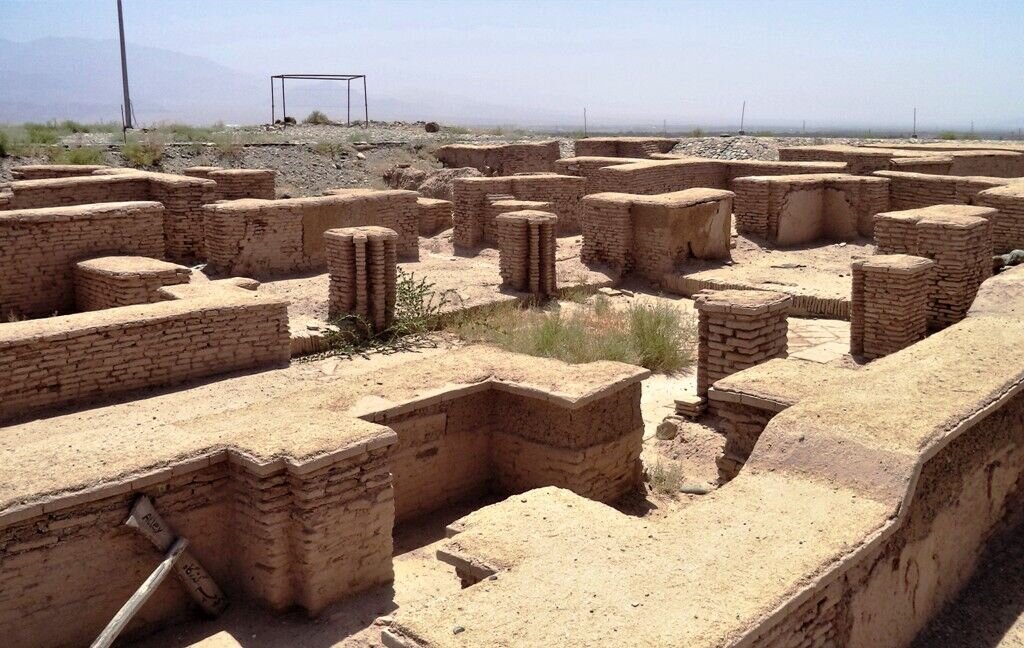Old Jiroft’s boundaries defined after decades of wait

TEHRAN – The legal boundaries of the ancient Jiroft have been officially determined after nearly half a century, Kerman province’s tourism chief said on Monday.
“Legal boundaries and preservation regulations of the ancient city of Jiroft, also known as the city of Daqyanoos, have been officially determined and approved after almost half a century,” Saeid Shahrokhi said.
In a statement on Monday, Shahrokhi noted that the map and regulations concerning the boundaries and preservation of the ancient city of Jiroft, which was registered on the National Heritage List in 1966, have been ratified by the Heritage Council of the Ministry of Cultural Heritage, Tourism, and Handicrafts.
“The designated area is now under the protection and supervision of our [provincial] department. Any alteration or violation of the protective regulations within this area is considered a criminal act and will be subject to legal penalties,” Shahrokhi emphasized.
He further explained that the delineation of historical sites’ boundaries and preservation areas is based on the significance of the site and the extent of archaeological excavations and surveys conducted.
Highlighting the importance of historical sites, Shahrokhi stated, “Historical artifacts reflect our cultural past and the lives of our ancestors. Future generations need to be familiar with their heritage and history, and the only way to achieve this is by preserving historical and national artifacts.”
The ancient city of Daqyanoos (Old Jiroft) is located along the banks of the Halil River, adjacent to the modern city of Jiroft. The Jiroft culture, also known as the Intercultural style or the Halilrud style, is an early Bronze Age (3rd millennium BC) archaeological culture located in what is now the provinces of Sistan-Baluchestan and Kerman.
Until the early 21st century, no one had ever imagined that a refined, forgotten culture could re-emerge from the sands of a remote and arid region in southeast Iran.
The story started when heavy floods swept away the topsoil, revealing thousands of previously unknown tombs in a Bronze Age cemetery in Jiroft. The remarkable findings at Jiroft demanded a reassessment of the earlier interpretation that Mesopotamia was the sole cradle of civilization.
In 2001, a flood of archaeological objects began appearing on the antiquities market, seemingly out of nowhere.
In a short time, distinctive pieces of jewelry, weapons, finely crafted ceramics, drinking vessels, and game boards featuring unusual artistry and magnificent inlays of carnelian and lapis lazuli found their way to antique markets for sale.
These extraordinary pieces displayed a complex symbology of animals, both wild and domesticated, depicted fighting among themselves or with human figures, the humans always triumphant. There were beautifully realized bucolic scenes of animals grazing in vast palm groves and architectural reproductions of temples or palaces.
Data provided by the internet sites and auction houses selling these mysterious pieces is sparse and, at best, vague. Their origins were often listed as “from Central Asia.”
At first, it was assumed that the pieces were the work of expert forgers. However, as more items appeared on the market in the following months, scholars began to speculate that they could be genuine, originating from an undocumented site. In 2002, more artifacts appeared on the market.
Iranian police solved the mystery later that year. A coordinated investigation led to the arrest of several traffickers and the confiscation of a hoard of artifacts. These objects were being prepared for shipment from Tehran, Bandar Abbas, and Kerman to buyers around the world. Investigators revealed that most of these distinctive pieces could be traced back to the Halil River Valley, about 25 miles south of Jiroft, a remote and peaceful city in southeastern Iran, not far from the Persian Gulf.
Layers of sediment were washed away, exposing the remains of an ancient cemetery. Locals and looters quickly recognized the importance of the find and moved to collect and sell the artifacts they had found.
AM
